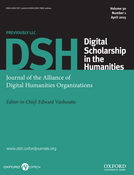-
Views
-
Cite
Cite
Michele Pasin, John Bradley, Factoid-based prosopography and computer ontologies: towards an integrated approach, Digital Scholarship in the Humanities, Volume 30, Issue 1, April 2015, Pages 86–97, https://doi.org/10.1093/llc/fqt037
Close - Share Icon Share
Abstract
Structured Prosopography provides a formal model for representing prosopography: a branch of historical research that traditionally has focused on the identification of people that appear in historical sources. Since the 1990s, KCL’s Department of Digital Humanities has been involved in the development of structured prosopographical databases using a general ‘factoid-oriented’ model of structure that links people to the information about them via spots in primary sources that assert that information. Recent developments, particularly the World Wide Web, and its related technologies around the Semantic Web, have promoted the possibility to both interconnecting dispersed data, and allowing it to be queried semantically. To the purpose of making available our prosopographical databases on the Semantic Web, in this article we review the principles behind our established factoid-based model and reformulate it using a more interoperable approach, based on knowledge representation principles and formal ontologies. In particular, we are going to focus primarily on a high-level semantic analysis of the factoid notion, on its relation to other cultural heritage standards such as CIDOC-CRM, and on the modularity and extensibility of the proposed solutions.





